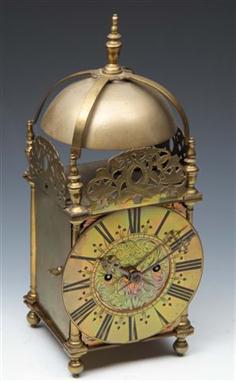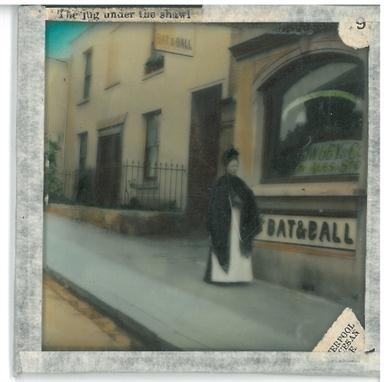We found 41682 price guide item(s) matching your search
There are 41682 lots that match your search criteria. Subscribe now to get instant access to the full price guide service.
Click here to subscribe- List
- Grid
-
41682 item(s)/page
† THE ARCHIVE OF PILKINGTON`S TILE & POTTERY CO LIMITED SUBSEQUENTLY THE PILKINGTON`S ROYAL LANCASTRIAN POTTERY COMPANY LIMITED AND PILKINGTON`S TILES LIMITED EXTENDING OVER A PERIOD OF ONE HUNDRED YEARS FROM THE LATE 19TH CENTURY including pattern books of original designs for tiles, pocket notebooks of glaze formulae and firings, photographs and documents (for details please see online catalogue at mellorsandkirk.com) A red marl, ideal for pottery was discovered by accident at the Pilkington brothers` colliery at Clifton Junction, near Manchester in 1888. Coal extraction no longer an option because of geological problems, the firm decided to manufacture bricks. On the advice of William Burton, a brilliant young chemist at Josiah Wedgwood & Sons, they instead established a high quality, decorative tile works. In 1891 the Pilkington Tile & Pottery Company was formed with Burton as its General Manager and also charged with the planning and building (without the aid of an architect) of what soon became one of the most advanced and extensive tile works. Production commenced in 1891 and two years later Burton was joined by his equally talented brother, Joseph whose research into new glazes was to prove invaluable. For the ensuing ninety years or so Pilkington`s tiles sold throughout the British Empire, Commonwealth and beyond. The scientific and technical expertise of the Burtons was such that the Company even explored the possibility of manufacturing pottery bullets, at the request of the War Office. A department specifically for the production of art pottery in particular lustre ware, began in about 1898. Under Burton`s enlightened management, the welfare of his workforce was a high priority with, for example, those working in the Lead House being given milk in an attempt to counteract the possible effects of lead poisoning. He also arranged for the artistic staff to go, expenses paid, to exhibitions including the Exposition Universelle in Paris, in 1900. William Burton was of that generation of ceramicists inspired by the unsurpassed sang de boeuf and other glazes of the early Chinese potters and it is not surprising that, largely due to his artistic sensitivity, some of the brightest stars in the Arts & Crafts firmament - including Walter Crane, C F A Voysey and Lewis F Day - were involved at Pilkington`s from the beginning. By the early 20th century the superb lustre ware, mainly chargers and vases, and painted by such talented artists as Gordon Forsyth and Richard Joyce were in a class of their own. In their proper art historical context these magnificent objects can be regarded as a continuation of the pioneering lustre wares of William Morris`s lifelong friend William de Morgan (1839-1917). The notable achievements of Howson-Taylor`s Ruskin Pottery, Bernard Moore and William Moorcroft, although equally original, lay in other directions. Never made in large quantities, the costly (not least because of high wastage) unique iridescent lustre glazes, fired in a reducing atmosphere in a muffle kiln, have always been regarded as amongst the finest such wares of their type, whether produced in England, Europe or America. An important constituent of the present archive is the group of experimental glaze firing records and books of formulae. Lustre ware was gradually superseded by the much cheaper eggshell glazed Lapis range produced in the 1920s & `30s. In truth, the lustre ware was never really profitably produced, and the Department was probably continued for reasons of prestige. De Morgan enjoyed no greater success, observing, in 1907, "...now that I can make [beautiful things] nobody wants them." The Pottery Department closed down, for the first time, in 1937. Over the subsequent history of the factory it was revived once or twice and in 1964 a merger with Carter & Co`s Poole Pottery heralded a short-lived revival in the fortunes of both factories. Complementing the limited holdings already in institutional collections, the importance of these extensive and unique primary source records of one of the most significant British manufacturers of pottery and tiles of the highest quality, lies in the fact that they are very far from being mere `dry` financial records. PILKINGTON ARCHIVE The factory records will generally be found in chronological sequence, much of the work of arranging/filing having been done in recent years by the Pilkington’s Lancastrian Pottery Society. It is housed in approximately twenty cardboard ‘bank’ and larger sized boxes. The principal items of interest are as follows: POTTERY AND TILE PRODUCTION 1. Three tile pattern books of original designs for wall tiles (see A J Cross, plt 6) 2. Original designs for 6 inch wall tiles including children’s, humorous and other subjects, c1920-c1950, all gouache some on watercolour board (approximately 350) 3. Tracings and pounce sheets for decorative tiles 4. Factory patents relating to various aspects of the production and decoration of tiles 5. Twenty-five notebooks written in pencil and filled with detailed records of glaze experiments, firing times etc with a further notebook labelled Index to Trial Books, by Abraham Lomax for the period 1901-11 and Joseph Burton, 1911-15. 6. Photographs, four boxes of glass negatives (12 x 16.5cm) of lustre and other vases either photographed singularly or in groups of usually two or three and two boxes of magic lantern slides, also eight reels of 16cm cine film colour, optical/sound: “Tile Fixing Today” 7. A quantity of original designs for tiled chimneypieces (one illustrated in A J Cross, plt 10) gouache on watercolour sketching board and miscellaneous designs on tracing paper for architectural ceramics CORRESPONDENCE Documents generally filed in manila envelopes including the company’s attendance at national/international exhibitions, insurance relating thereto, other insurance policies for salesmen/travellers overseas, An Enquiry into the Boiler Explosion and Fatal Accident 1911, files of business letters and copy letters including internal memoranda relating to glazes, samples overseas orders, screen printing equipment, production tables and miscellaneous subjects. An extensive series of mainly autograph letters signed to William Burton, many from his brother Joseph, others from the Pilkingtons including Alfred, Edward, Laurence and Charles (one dated August 1895 “I send you herewith a sample of red marl out of our borehole... I don’t think it is very good”), W Bush, J Lee Wood, John Chambers, trade suppliers/contractors such as William Boulton (engineer) many in the Potteries, including Frank Keeling, Maw & Co, John Ridgway, Cravan, Dunnill & Co and the Old Hall Porcelain Works, Hanley, several letters from the employees of other manufacturers seeking positions at Pilkington’s, artists such as Cosmo Rowe (1877-1952), mosacists and others, several hundreds filed in two modern white ring binders, period 1889-1894 and 1895-1901. Home Office Whitehall, framed typed letter signed (Edward Thorp) 3 September 1913 to the Company’s solicitors informing Pilkington’s that the king [Goerge V] has granted permission for the use of the tile “Royal Lancastrian Pottery” for their “artistic pottery”. FINANCIAL RECORDS Important documents in the factory’s history including the Certificate of Incorporation, Memorandum and Articles of Association of The Pilkington’s Pottery Company Limited, 1891 and Certificate of Incorporation for change of name to Pilkington’s Tile and Pottery Co Limited, 1892 and approximately 75 ledgers and journals including cash books, expenses, general journals, tile fixing accounts, tile stock, share certificates, wages books and analysis of new work, 1892 onwards.
A gilt brass and glass cylindrical hall lantern in the George III style, circa 1900, with four bowed glass panes, one hinged to open, the serpentine supports above rising from urn finials, 55cm high overall, (lacking three of four toupie feet); and another gilt metal and glass cylindrical hall lantern, late 20th century
Various silver items, comprising amethyst set rings (2), both different modern designs, cushion shaped pendant with red enamelled flower decoration, complete with fine curb chain, ornate marcasite pendant, complete with fine square serpentine type chain, 18" beaded lantern link chain, fitted with lobster claw fastener & a silver bracelet with two mother of pearl butterflies, large bolt ring & T-bar fastener, stamped, tested or h/m (gross 1.43oz) (6) as new
5 C19th Samson Porcelain Figurines: Standing Figure of Young Man with pink jacket, basket of fruit & lantern on rocky, flower encrusted base, approx. 7" H, Pair Greek Classical Figures inc. Mercury holding a caduceus with winged hat & gourd & Zeus in loose fitting robe with spread eagle & Pair C18th Dressed Classical Figures of boy with black hat carrying milk churn & companion figure with yolk & milk churn at her feet (5)
A Brass Miniature Striking Lantern Clock Made For The Turkish Market, signed Robt Ward, London, circa 1790, 3-1/2-inch arched brass dial with silvered Turkish numeral chapter ring, matted dial centre, the arched with circular silvered disc signed, four posted movement with verge escapement and striking on a top mounted bell, engraved Turkish crescents to the side opening door panels, (both side frets are missing), bob pendulum, later adapted hoop and spurs, 20.5cm high, together with a small lead weight
An early 20th Century Lacquered Brass Mantel Clock, modelled in the form of a lantern clock with strapwork frame and bell support, over pierced and engraved pediments, and oversize Roman chapter ring with half-hour markers, inside quarters, to a further floral engraved centre, and raised on cast ball feet, to a spring-driven movement with rectangular plates united by four plain pillars and with anchor escapement and strike on the bell, height 15”
A good ivory Samurai, Taisho (1912-26) standing in typical pleated costume, two swords at his waist and holding a lantern with the character O, others on his dress, the whole with finely-engraved black detail, Hozan in seal characters on a red lacquer reserve, 14cm The samurai is a retainer of the Daimio Okubo, hence the mon.
-
41682 item(s)/page


















































